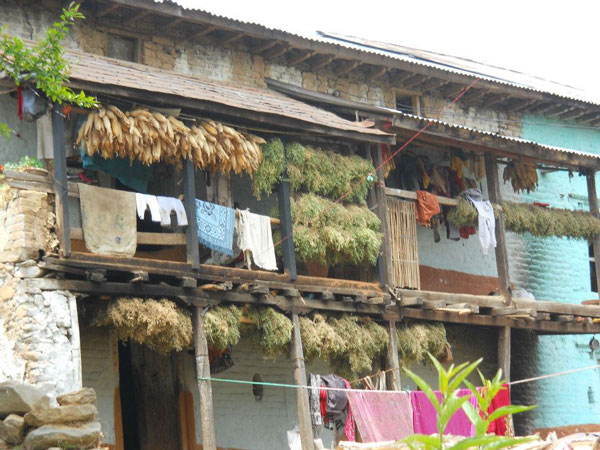-
About
- Our Work
- Get Involved
- Stay Updated
Food insecurity and post-harvest losses

Today one of the main global challenges is how to ensure food security for a world growing population whilst ensuring long-term sustainable development.
According to the FAO food production need to grow by 70 percent to feed world population which will reach 9 billion by 2050.Further trends like increasing urban population, shift of lifestyle and diet patterns of the rising middle class in emerging economies along with climate change put considerable pressure strain on the planet's resources and biodiversity, loss of fertile land etc.Consequently there is a need for integrated and innovative approach to global effort of ensuring sustainable food production and consumption.
Massive quantities of food are lost due to spoilage and infestations on the journey to consumers while the number of food insecure population is unacceptably high.Fo instance in Nepal where improper harvesting practices and poor post harvest technologies is main cause of the problem, wastage reach as high as 20-50 percent regularly.Obviously, one of the major ways of strengthening food security is by reducing these losses.Reductions of post-harvest losses is of high importance in an effort to combat hunger, raise income and improve food security and improve livelihood in a country like Nepal.Between the harvest location and retail market, agricultural produce undergoes a number of processes including transportation and storage losses at various environmental conditions, minimization of such losses through different post-harvest technologies help in increasing the availability of food to the consumers while increasing profitability to the producers .The quest for reduction in post-harvest losses is inherently linked to availability and profitability of technologies that can eliminate or reduce losses.On farm technologies like curing the roots , tubers and bulbs leads to a return that is 2.5 times larger than the non-adoption.Similarly,cooling practices on vegetables can provide gains up to 7.5 times higher the initial cost.Post harvest technologies is of two types.One is capital intensive, for eg , metal silos used for storage requires more cost for adoption ,though the return is high and the other is labor intensive, for eg, improved packaging technology.
Post harvest technologies can contribute to food security in multiple of ways.They can reduce PHL, thereby increasing the amount of food available for consumption by farmers and poor rural and urban consumers.For example, the control of the Grain borer greatly reduced the loss of on farm maize in remote part of mid-hills of Nepal , thus improving their food security.In addition, post-harvest activities such as processing and marketing can create employment (and thus income) and better food security in the agricultural sector.
Therefore, post-harvest losses clearly complements other efforts to enhance food security through improved farm level productivity.Are you working the post harvest losses sector? What expirences have you had?
About the author
Related Posts
Comments
No comments made yet. Be the first to submit a commentBy accepting you will be accessing a service provided by a third-party external to https://ypard.net/
Get in touch
Email: [email protected]
YPARD Global Coordination UnitHosted by AGRIDEA and the Czech University of Life Sciences Prague
Lausanne, Switzerland and Prague, Czech Republic - Our Work


